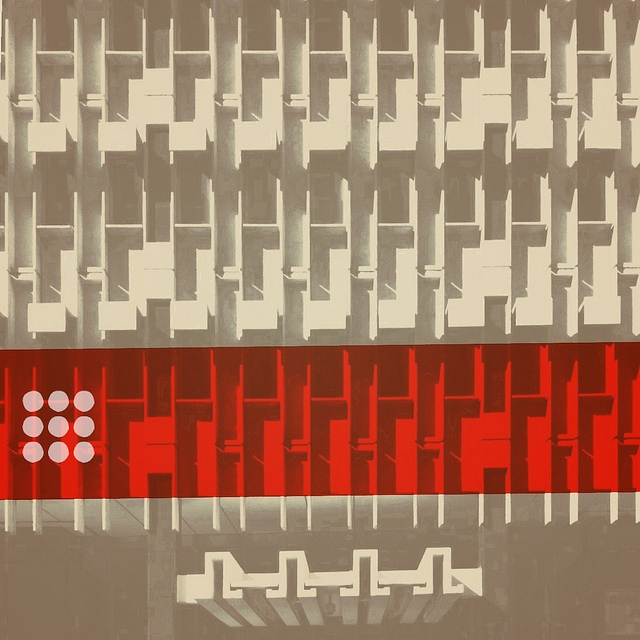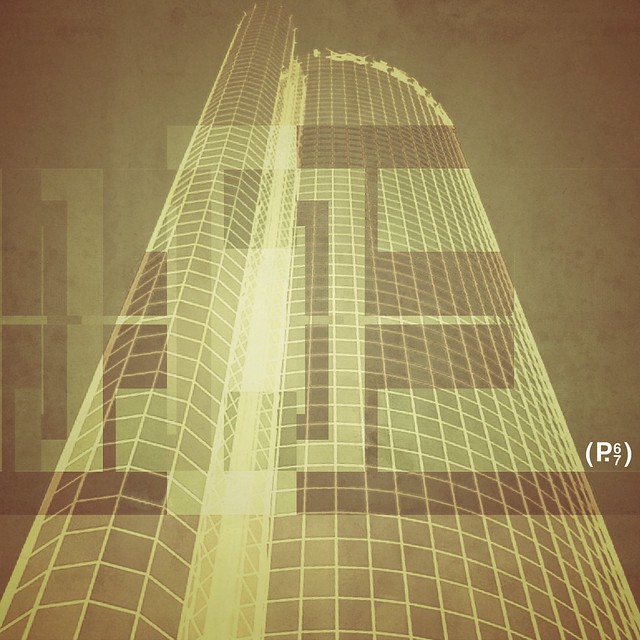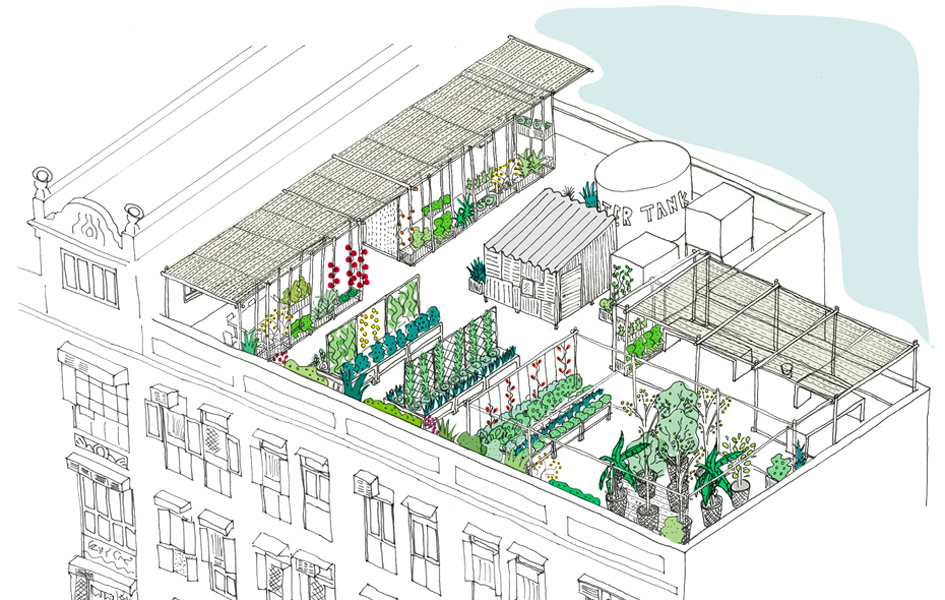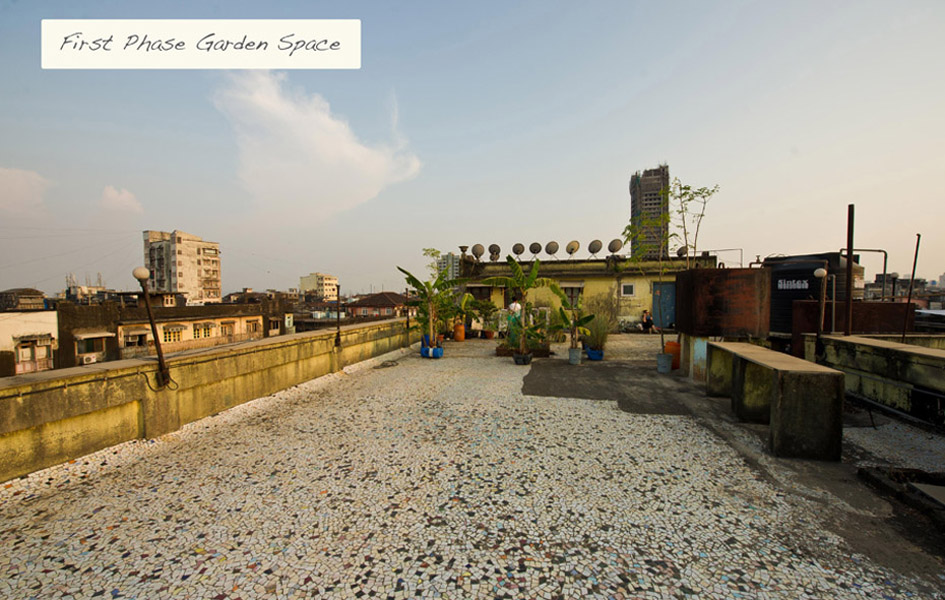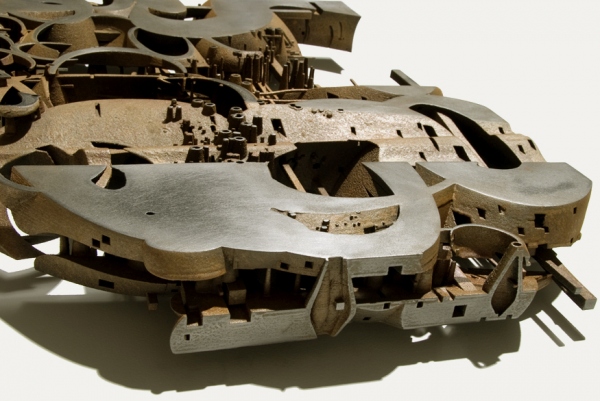See more of Lynette Jackson’s Architectural iPhone Collages.
Month: April 2012
Flyover Farm by Fresh & Local
Via Mumbai Boss, comes the story of Flyover Farm by Fresh & Local which is aiming to add farms on top of existing Mumbai buildings, and they have a Kickstarter:
Fresh & Local is a movement to facilitate urban farming in Mumbai. We started in the spring of 2010, in reaction to the lack of fresh and organic produce, and the lack of resources and support for urban farming in the city. We research and develop best practices, design gardens and garden products, host gardening workshops and work in partnership with NGOs and individuals to set up kitchen gardens across the city.
Fresh and Local’s Flyover Farm project is a natural progression and culmination of the work currently being carried out.
This is all really interesting, but seeing the existing building stock which is generally of poor construction and knowing how much soil is required to grow fruit and vegetable plants, I fear that not many building can support the weight of these roof farms. I applaud the project, since we have lots of roof space in Mumbai, and the quality of vegetables will undoubtably be better than the ones grown on the sides of the suburban railways.
The Power of Fear in Networked Publics
Increasingly, the battles over identity are moving beyond geek culture into political battles. The same technologies that force people into the open are being used to expose people who are engaged in political speech. Consider, for example, how crowdsourcing is being used to identify people in a photograph. It just so happens that these people were engaged in a political protest.
Radical transparency is particularly tricky in light of the attention economy. Not all information is created equal. People are far more likely to pay attention to some kinds of information than others. And, by and large, they’re more likely to pay attention to information that causes emotional reactions. Additionally, people are more likely to pay attention to some people. The person with the boring life is going to get far less attention than the person that seems like a trainwreck. Who gets attention – and who suffers the consequences of attention – is not evenly distributed.
And, unfortunately, oppressed and marginalized populations who are already under the microscope tend to suffer far more from the rise of radical transparency than those who already have privilege. The cost of radical transparency for someone who is gay or black or female is different in Western societies than it is for a straight white male. This is undoubtedly a question of privacy, but we should also look at it through the prism of the culture of fear.
Neue Haas Grotesk
Conversations with Lebbeus Woods and Thom Mayne
If you’re exploring just the level of organizational types because that’s usually what we do—we organize the world and we literally concretize it. We bring a certain order. That order is a response to how we locate ourselves in the world in philosophical terms—in the total sense; all the disciplines….
I’m looking for…or I am challenging…or I am myself searching for what that means with those organizational forms. I am looking for something that I see as more contemporary and that is connected to the 21st century thinking and it seems as though it’s moving from the mechanical to the biological. There is a thrust that is becoming clear to us in terms of where we look for our ideas, right? We are paralleling in terms of the modern notion of who we are.
I’m looking for something that is discursive, that is understandable, that doesn’t depend totally on personal facility, meaning it’s private—because these are collective projects. I work with another person that is actually drawing the specific nature of the model.
And I would have said that the formation of these are first and foremost the operational strategy, which is the most powerful thing. Then, after that, it’s some combination of my critique; my development of that process and my engagement with the person actually mechanically putting them together. So it is a very complicated, already collective process of even how they come together and it’s not by me at all.
It’s all about the headways. Period
Part of the conventional wisdom about transit which prevents spending real money on quick headways is that “There’s no market. People aren’t using that route. Why should we be running empty buses?”
My quick answer to that old saw is that just as with roads, with transit, supply induces demand. If you offer a rich ‘connection pipe” (to garble Walker’s terminolgy) then people will use it and people will get used to the service and presto you have political support. People support things (politically) that they use.
It's all about the headways. Period. – City Comforts, the blog.
How Veronika Scott uses Steelcase’s discarded fabric to help Detroit’s homeless
Veronika Scott, a 22-year-old designer, is credited with saving lives with the invention of “Element S Coat,” a self-heated and waterproof coat that transforms into a sleeping bag at night. The coats have been distributed for free to 22,000 homeless Detroit residents through her organization The Empowerment Plan.
Late last fall, Scott began working with Steelcase Inc. to obtain discarded fabric to use as lining for her coats made of Tyvek and wool. So far, the Kentwood office furniture maker has provided 6,000 yards – the equivalent of 3.5 miles.
Read more at How a 22-year-old designer uses Steelcase’s discarded fabric to help Detroit’s homeless and watch the TEDx talk below.
Happy Birthday, Rome!
During the Roman Republic, several dates were given for the founding of the city between 758 BC and 728 BC. Finally, under the Roman Empire, the date suggested by Marcus Terentius Varro, 753 BC, was agreed upon, but in the Fasti Capitolini the year given was 752. Although the proposed years varied, all versions agreed that the city was founded on April 21, the day of the festival sacred to Pales, goddess of shepherds; in her honour, Rome celebrated the Par ilia (or Palilia). (The Roman a.u.c. calendar, however, begins with Varro’s dating of 753 BC.)
– via Founding of Rome on Wikipedia.
The design of a signage typeface
The story begins in 2006 with a trip down Route 66. Day in, day out, I looked at U.S. traffic signs that were either set in the old, somewhat clumsy “FHWA font series” or the new Clearview HWY typeface. Approaching the signs, I would often test myself: which typeface works best from a distance, and which of its features or details might be responsible for its performance.
Read more at The design of a signage typeface Wayfinding Sans and see a Flickr collection of World of Traffic Signs and group Type on Traffic Signs.
Alternative London 2012 Olympics Logo
Alternative Olympic 2012 Logos by Daniel Eatock. Both alternative logos are a composite of two icons: the Olympic Rings, created in 1913 by Pierre de Coubertin and the RAF Roundel, associated with British pop art of the 1960s, appearing in paintings by Jasper Johns and Peter Blake.
The first alternative logo features equal sized rings and the second alternative logo features the five colored rings and the white space that separates them all with the same surface area.
